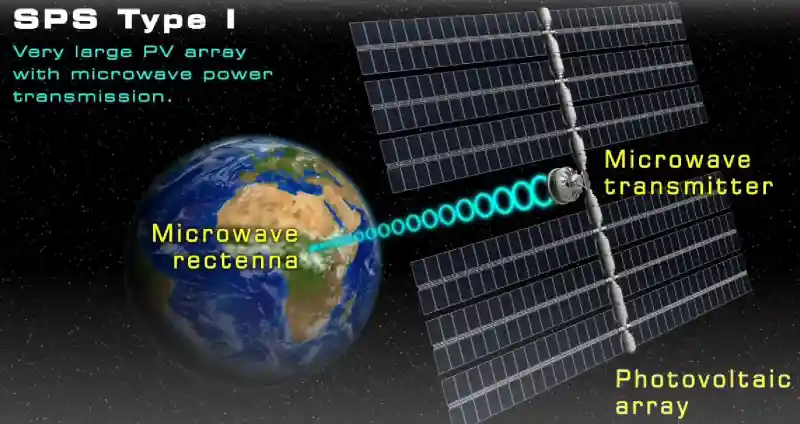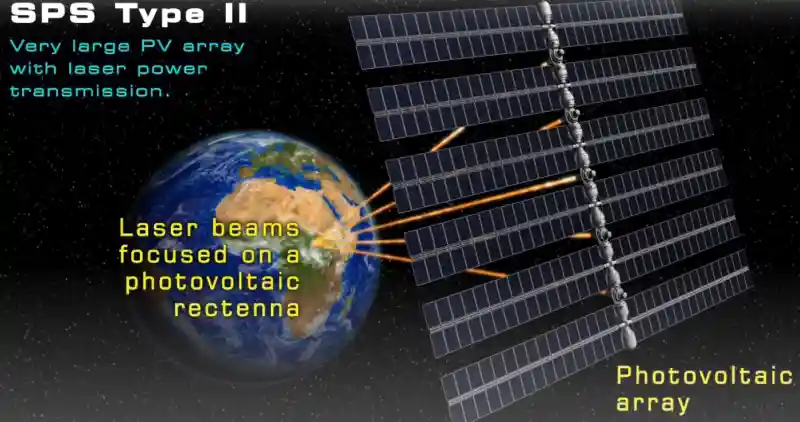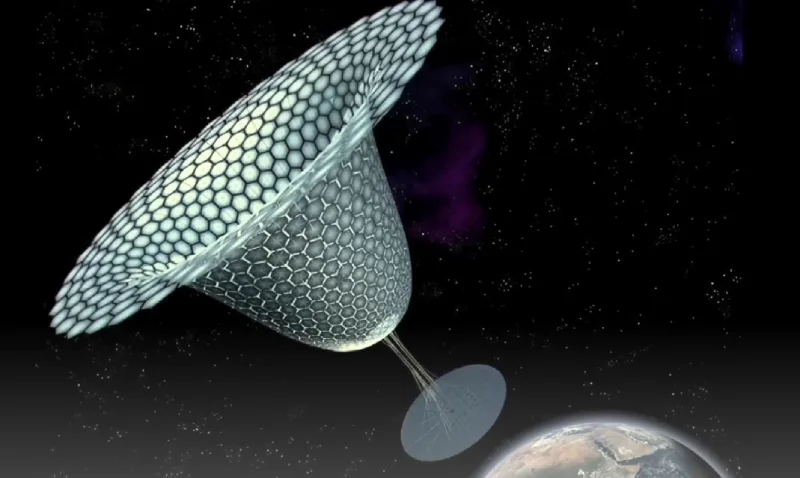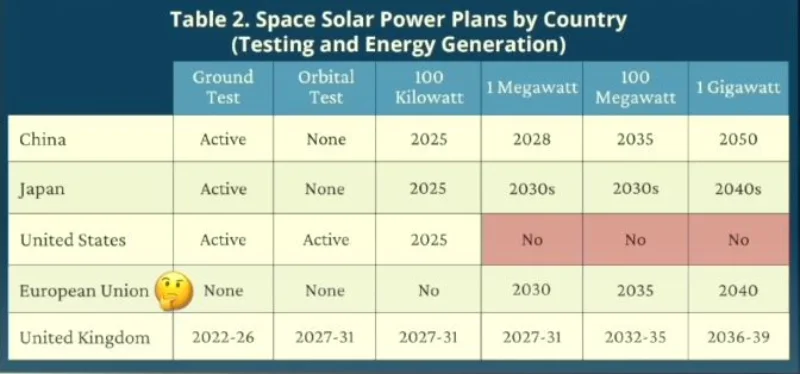Is Space-based Solar Power the Future?
Picture this: A satellite harvesting sunlight free from the constraints of weather, atmosphere, or the cycle of day and night.
Imagine this energy being beamed back to Earth, providing a ceaseless, clean energy stream, just like you’d see in the latest future sci-fi movie.
It turns out this future might be closer than we thought…
Introducing Space-Based Solar Power (SBSP) – how we got here, the crazy, the good and not so good, and finally, if it’s here to stay?
- Space-Based Solar Power (SBSP) involves satellites capturing solar power in space and beaming it back to Earth.
- SBSP presents an eco-friendly energy source with the potential for constant base-load energy, which can be redirected to different locations.
- The convergence of advancements in solar energy and space technology has driven costs down, making SBSP potentially viable in the near future.
- The strategy is to launch demonstration projects serving niche markets before scaling up to full utility scale.
- Influential figures like Elon Musk argue that ground-based renewable energy combined with energy storage systems will likely outcompete SBSP due to lower costs and less technical difficulty.
Contents
- What is Space-based Solar Power?
- Who Invented Space-based Solar Power?
- What are the Different Types of Space-based Solar Power?
- It’s No Longer Science Fiction
- What are the Advantages of Space-based Solar Power?
- What are the Blockers?
- What are the Uses for Space-Based Solar Power?
- Conclusion
What is Space-based Solar Power?
Space-based Solar Power (SBSP) is a theoretical method of harnessing solar radiation in space and converting it into useful electricity on Earth.
The power station is a space satellite that uses photovoltaic (PV) panels to convert solar radiation into electricity. Electricity is then used to emit microwaves or laser beams towards a small area on Earth where receiving antennas (Retennas) convert the electromagnetic energy into useful electricity.
Microwaves and laser beams can penetrate clouds, atmospheric haze, and even solid objects without a significant energy loss and are, therefore, extremely reliable.
Since the satellites maintain a geostationary orbit (meaning they stay at a fixed point above the Earth), they receive sunlight without interruption and emit the energy back to Earth irrespective of seasons or day/night transitions. It’s the ultimate baseload power source.
The prevailing consensus suggests delivering the power station to space in pieces on small payload rockets making several journeys. The station would then need to be assembled in space, a task which could be performed by either humans or robots.
Who Invented Space-based Solar Power?
Like most breakthrough technologies, space-based solar power results from numerous advancements over the past decades. The first designs and patents emerged in 1973, credited to Peter E. Glaser, an American engineer. Glaser invented a system of microwave antennas similar to the designs we are exploring today.
This innovation sparked a global flurry of developments. NASA has been involved in the field since the 1970s, but attention on the topic grew more serious in the 1990s as the implications of climate change began to be acknowledged as a significant long-term issue that needed a lot of green energy.
In 2011, a breakthrough report by the International Academy of Astronautics concluded that “there are no fundamental technical barriers that would prevent the realisation of large-scale SPS platforms during the coming decades”. The report outlined three types of designs seen as the most viable.
What are the Different Types of Space-based Solar Power?
Drawing from the report, we can classify space-based solar power (SBSP) into three primary types, each with its strengths, pitfalls and characteristics.
SSP Type 1

This involves using a photovoltaic (PV) array that converts solar energy into microwaves and transmits it to a collector on Earth.
Microwaves, which are used extensively in telecommunications, are considered reliable technology here on Earth, but their safety in this application still needs validation, considering they’d be a million times stronger than the energy from your typical home WiFi device.
SSP Type 2

This design also harnesses solar radiation using PV arrays, but this time, it converts solar energy into laser beams that are transmitted onto a receiver at the surface of the Earth. Lasers have the advantage of spreading less during transmission, but they can be expensive and inefficient.
SSP Type 3

Rather than having a large area of expensive and heavy PV arrays, this design employs an array of mirrors instead. These reflect the sunlight and concentrate it onto small PV panels on the satellite (analogous to Concentrated Solar technology on Earth). The energy is then beamed back to Earth as microwaves.
There are numerous designs for Type 3, including one by John Mankins that resembles a cocktail glass. This unique design boasts a diameter of 2km and weighs approximately 8,000 tonnes.
It’s No Longer Science Fiction

What was once the realm of science fiction is gradually becoming our reality, thanks to major advancements in space and solar power technologies.
Solar Photovoltaic (PV) energy has dramatically decreased cost per kWh. Similarly, rockets are no longer single-use and can now make regular return trips into space. This development has significantly reduced the overall cost of space missions.
Countries like the US, China, the EU, and the UK have all established their research programmes and consistently advanced their demonstration projects for this technology.
In 2021, the UK’s Department for Business, Energy & Industrial Strategy (BEIS) launched a consultancy on SBSP. The conclusion was that SBSP is becoming feasible due to the declining costs of space launches and commercial solar panels. This trend makes the launch of small payloads into space more achievable, mirroring how Starlink has been launching its internet satellite constellations.
According to a report titled “De-risking the Pathway to Net-Zero“, it is plausible to “realise a constellation of solar power satellites delivering a substantial percentage of the UK’s energy needs by the early 2040s.” However, one can’t help but wonder if this is just an elaborate pretext to justify their £500 million investment into the OneWeb satellite system during the pandemic.
China is also aggressively pursuing this technology and making significant headway with its demonstration projects. The Japanese are not far behind, swiftly following suit. The European Space Agency (ESA) is equally invested but appears to be taking more time in its approach.
What are the Advantages of Space-based Solar Power?
The merits of this system are becoming increasingly apparent, but for the sake of brevity, here’s a concise list of the primary advantages:
- SBSP is a green, renewable business energy source with a low carbon footprint. Once the system is up and running, operational emissions are practically non-existent.
- SBSP operates around the clock because the satellite is stationed at a fixed orbit and is perpetually exposed to sunlight. Its beam is not susceptible to interruption by weather conditions, haze, or even solid objects.
- SBSP diversifies energy generation, thus augmenting the energy security of our world. Even in a nuclear apocalypse, this may be a source of energy for survivors.
- SBSP can alter the ground location of energy generation by directing the beam at a different receiving antenna. This flexibility suits remote applications such as military operations, research, space colonisation and exploration.
What are the Blockers?
Elon Musk isn’t fond of the SBSP idea, even if he is most likely enthusiastic about a concept like this, being at the helm of a solar and space company. There are several reasons for his hawkishness that sum up the technology’s main blockers:
Low Efficiency
Any space system (Type 1, 2, and 3) needs three energy conversions to deliver helpful electricity to the grid.
First, the Sun’s photons are transformed into electrons at the satellite. Then, these electrons are converted back into photons (microwaves or lasers) and beamed to Earth. Finally, upon reaching Earth, they are converted back into electrons for use in the national grid as electricity.
Estimates suggest the efficiency of such a system could be as low as 9%, significantly lower than most existing ground-based energy sources.
It’s Still Costly
Even though space ops and solar PV developments have sunk costs enough to make this tech potentially feasible, it is hard to imagine this tech becoming economically competitive with current ground-based green energy generation.
Price estimates for Space-based Solar Power undertaken by the UK and EU put the LCOE at around 60-80 US dollars per MWh for this technology and do so under the extremely optimistic estimate that this unproven tech has a life span of 100 years! To put this in context, this is four times cheaper than current British business electricity prices but ignores distribution and other costs borne by business energy suppliers.
For comparison, current onshore solar and wind farms have LCOEs of around 40 – 60 US dollars per MWh, which is lower immediately and does not even consider that technological improvements are likely to sink the price even lower over the coming decades.
Considering the decreasing costs of energy storage, the rapid growth of distributed grids and the increasing feasibility of electricity arbitrage strategies, we think that it is virtually impossible for SBSP ever to become competitive.
Space Risks
Unlike the Earth’s surface, which is safeguarded by our planet’s magnetic field and atmosphere, space is a rather hostile place. It features hazards like meteorites, solar flares, a growing amount of space debris, background radiation, and significant temperature fluctuations, to name a few.
Some of these hazards can be quantified, but others are more elusive. This uncertainty makes these systems’ maintenance costs and lifecycle challenging to estimate, implying that considerable effort and capital investment could quickly be wasted due to unforeseen space incidents.
Moreover, there are potential risks to life when beaming high-energy waves into the Earth’s atmosphere. These would need to be thoroughly validated before any deployment. Unsafe high-powered lasers or microwaves could render the technology much less feasible.
Technical Difficulties
Let’s be clear: this is an experimental technology that still needs to prove itself in space. While solar panels have been a common feature of satellites for several decades, the assembly of these power stations in space, the wireless transmission of their energy back to Earth, and the conversion of this energy into usable electricity are all pioneering feats.
What are the uses for Space-Based Solar Power?
Some experts posit that the initial applications for SBSP will be found in niche sectors, serving as practical demonstrations of the technology as prices continue to decrease and paving the way for its implementation on a utility scale.
For instance, military, research and emergency response purposes could greatly benefit from SBSP, given that the energy beams can be aimed at different locations on Earth’s surface, with near-immediate availability and 100% reliability. This could provide a viable alternative to diesel generators or portable solar.
Beyond terrestrial applications, space colonisation presents another prospective use case for SBSP (remember that solar panels on the moon are difficult, as lunar nights span two weeks!).
Conclusion
Determining whether SBSP will indeed ascend is tricky. Without the substantial capital and unflagging commitment of a figure like Elon Musk, it’s hard to envisage the tech flourishing.
However, there is a path for Space-Based Solar Power in its prospective niches, which may demo the technology as a potential utility-scale alternative.
However, traditional, ground-based power generation and storage seem bound to outpace and overshadow SBSP in almost every metric, price, risk, commitment and scalability.
Only the future holds the answer, though, and this will surely be full of surprises!
External Resources
- FT
- BBC News
- Explaining the Future
- Joe Scott
- Sabine Hossenfelder
- IAA – Space Solar Power paper
- De-risking the Pathway to Net-Zero – UK Gov
Extended reading:
Agrivoltaic Solar Farms: Find out what Agrivoltaic solar farms are, what their origins are, what the different types are and much more.
Solar Roof Tiles: Find out all about the new technology of solar roof tiles, what they are, how they work and the pros and cons.
Solar Water Heating: Find out what solar water heating is, why it is important, and why Solariskit differs from prior solutions.
Solar Powered Seawater Greenhouses: Learn all about desert greenhouses, solar desalination and the Sundrop system.

